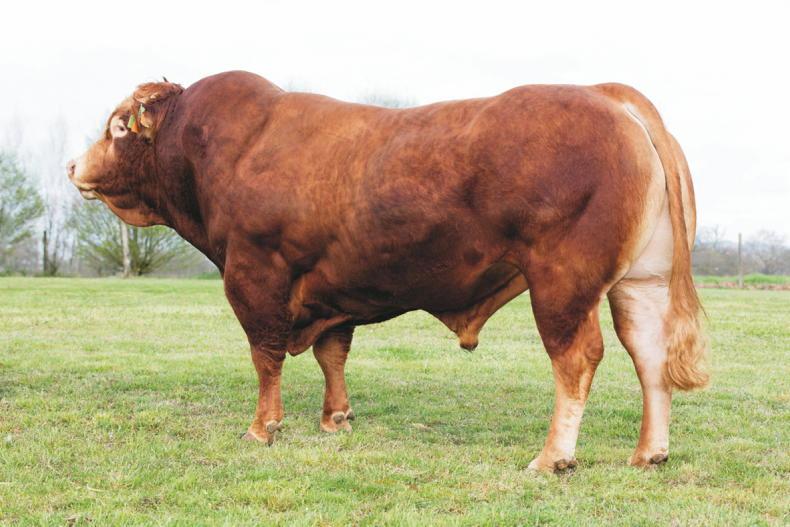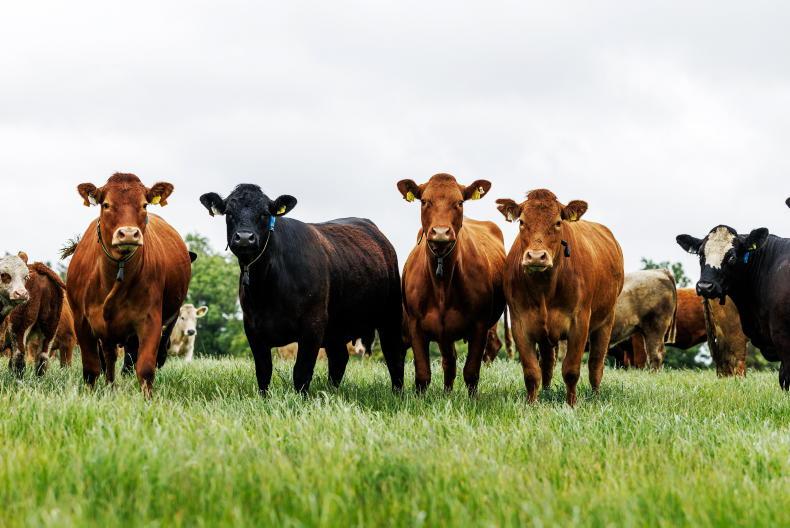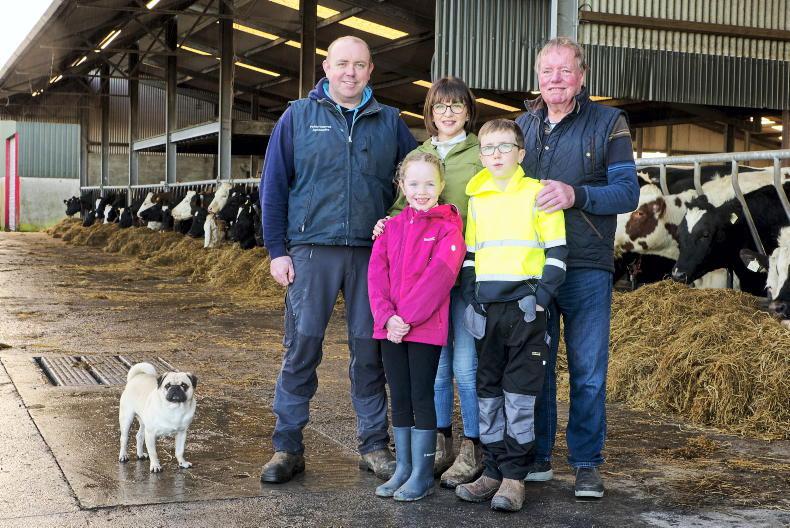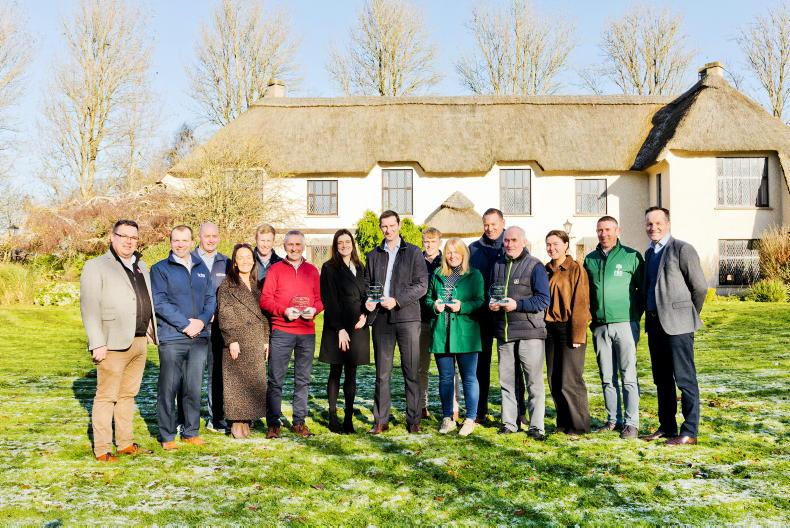Like them or loath them, genetic indexes are here to stay. While some farmers still don’t use them, many now use the €uroStar values as a tool when either selecting females for replacements or selecting sires for their herd.
The introduction of the commercial beef value (CBV) index last year will now see beef finishers being able to make informed decisions based on the genetic makeup of the store animals they are buying.
A new BDGP as part of the next round of CAP will also mean that farmers will be paid to make genetic improvements on their farms over the next five years.
The tables highlight some of the top bulls available for use in 2022 across a number of different indexes.
The terminal index is used where suckler farmers are finishing progeny from the bulls used or selling all weanlings.
The terminal index is, as its name suggests, based on terminal traits and it estimates how profitable a bull’s progeny will be from birth to slaughter.
Carcase traits like carcase weight and carcase conformation make up 56% of this index.
Calving traits are also important. There’s no money in dead calves and calving traits make up 26% of the index.
Feed intake and feed efficiency are important from a finisher’s point of view with the aim of highlighting the animals that have a high daily liveweight gain, while consuming a small amount of feed.
This trait makes up about 16% of the index.
Finally, docility makes up 2% of the terminal index. The Limousin breed dominates the terminal top 10 list with four Limousin bulls making it into the top 10 and it’s also the Limousin bull Gstadd that claims the top spot with a terminal index of €191.
He comes in at 42.7kg for carcase weight, 2.77kg for carcase conformation and 4.2% on calving difficulty.
Three Charolais bulls, two Belgian Blue bulls and a Parthenaise bull make up the top 10.

Knottown Roy, second in the top 10 replacement bulls index for March 2022.
The replacement index is used in selecting bulls to breed replacement females for the suckler herd.
The replacement index estimates how suitable daughters of a bull will be for being good, low maintenance profitable suckler cows.
Fertility is very important in a profitable breeding cow and it makes up 23% of the index.

Tomschoice Lexicon, 10th in the top 10 replacement bulls index for March 2022.
Carcase traits make up 21% of the index, while milk makes up 18% of the index.
Feed intake also makes up 18% of this index, while calving traits make up 16%.
Docility comes in at 4% for this index. The top 10 bull list on the replacement index is dominated by Salers bulls with Beguin still in the top spot with a replacement index of €274, €16 ahead of another Salers bull Knottown Roy.

Turloughmore Magnificient, fourth in the top 10 replacement bulls index for March 2022.
Ulsan makes it a 1, 2, 3 for the Salers breed at the top of the list.
Beguin has +10.9kg for milk and comes in at -7.96 days on daughter calving interval. There are four Salers bulls, three Simmentals, one Limousin and one Aubrac bull in the top 10.

Ewdenvale Ivor.
The dairy-beef Index is a relatively new index having been launched in 2018. This index is for use by dairy farmers to choose beef bulls for use on the dairy herd.
The dairy-beef index (DBI) is a tool to produce quality beef cattle from the dairy herd with short gestation and calving ease that will also grow and finish well. This index is heavily weighted by dairy calving difficulty at 35%.
It is important that any beef bull used on the dairy herd doesn’t lead to hard calvings.
Carcase weight comes in at 27%, while gestation length comes in at 13%.
Feed intake makes up 9% of this index, while out of spec makes up 8%.
Carcase conformation comes in at 4%, while carcase fat comes in at 2%. Calf mortality is at 1% and docility is at 1%.
Three Belgian Blues, three Aubracs, three Salers and a Limousin make up the top 10 list. The Aubrac bull Dauphin takes the top spot with a dairy-beef index of €147.
The Limousin bull Ewdenvale Ivor takes the number two spot, with a dairy-beef index of €143.
Like them or loath them, genetic indexes are here to stay. While some farmers still don’t use them, many now use the €uroStar values as a tool when either selecting females for replacements or selecting sires for their herd.
The introduction of the commercial beef value (CBV) index last year will now see beef finishers being able to make informed decisions based on the genetic makeup of the store animals they are buying.
A new BDGP as part of the next round of CAP will also mean that farmers will be paid to make genetic improvements on their farms over the next five years.
The tables highlight some of the top bulls available for use in 2022 across a number of different indexes.
The terminal index is used where suckler farmers are finishing progeny from the bulls used or selling all weanlings.
The terminal index is, as its name suggests, based on terminal traits and it estimates how profitable a bull’s progeny will be from birth to slaughter.
Carcase traits like carcase weight and carcase conformation make up 56% of this index.
Calving traits are also important. There’s no money in dead calves and calving traits make up 26% of the index.
Feed intake and feed efficiency are important from a finisher’s point of view with the aim of highlighting the animals that have a high daily liveweight gain, while consuming a small amount of feed.
This trait makes up about 16% of the index.
Finally, docility makes up 2% of the terminal index. The Limousin breed dominates the terminal top 10 list with four Limousin bulls making it into the top 10 and it’s also the Limousin bull Gstadd that claims the top spot with a terminal index of €191.
He comes in at 42.7kg for carcase weight, 2.77kg for carcase conformation and 4.2% on calving difficulty.
Three Charolais bulls, two Belgian Blue bulls and a Parthenaise bull make up the top 10.

Knottown Roy, second in the top 10 replacement bulls index for March 2022.
The replacement index is used in selecting bulls to breed replacement females for the suckler herd.
The replacement index estimates how suitable daughters of a bull will be for being good, low maintenance profitable suckler cows.
Fertility is very important in a profitable breeding cow and it makes up 23% of the index.

Tomschoice Lexicon, 10th in the top 10 replacement bulls index for March 2022.
Carcase traits make up 21% of the index, while milk makes up 18% of the index.
Feed intake also makes up 18% of this index, while calving traits make up 16%.
Docility comes in at 4% for this index. The top 10 bull list on the replacement index is dominated by Salers bulls with Beguin still in the top spot with a replacement index of €274, €16 ahead of another Salers bull Knottown Roy.

Turloughmore Magnificient, fourth in the top 10 replacement bulls index for March 2022.
Ulsan makes it a 1, 2, 3 for the Salers breed at the top of the list.
Beguin has +10.9kg for milk and comes in at -7.96 days on daughter calving interval. There are four Salers bulls, three Simmentals, one Limousin and one Aubrac bull in the top 10.

Ewdenvale Ivor.
The dairy-beef Index is a relatively new index having been launched in 2018. This index is for use by dairy farmers to choose beef bulls for use on the dairy herd.
The dairy-beef index (DBI) is a tool to produce quality beef cattle from the dairy herd with short gestation and calving ease that will also grow and finish well. This index is heavily weighted by dairy calving difficulty at 35%.
It is important that any beef bull used on the dairy herd doesn’t lead to hard calvings.
Carcase weight comes in at 27%, while gestation length comes in at 13%.
Feed intake makes up 9% of this index, while out of spec makes up 8%.
Carcase conformation comes in at 4%, while carcase fat comes in at 2%. Calf mortality is at 1% and docility is at 1%.
Three Belgian Blues, three Aubracs, three Salers and a Limousin make up the top 10 list. The Aubrac bull Dauphin takes the top spot with a dairy-beef index of €147.
The Limousin bull Ewdenvale Ivor takes the number two spot, with a dairy-beef index of €143.














SHARING OPTIONS